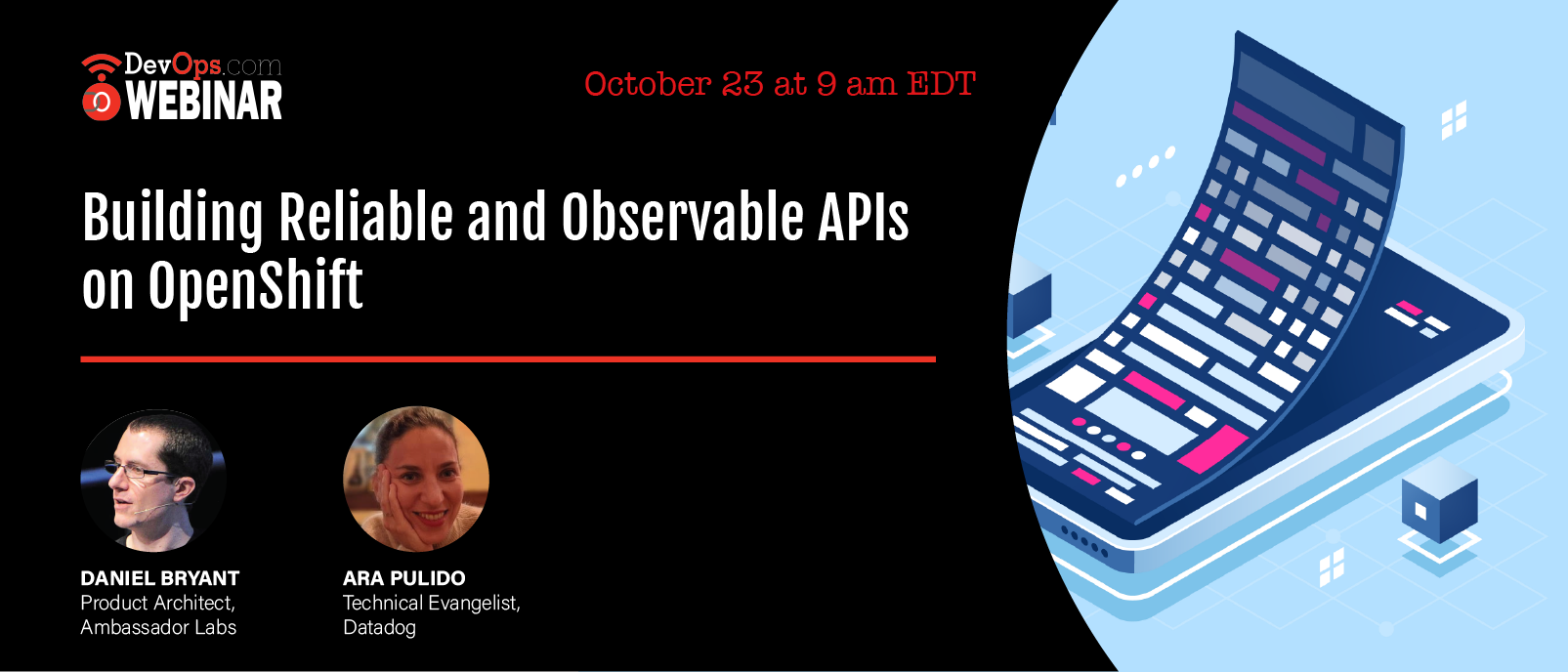Webinar
Think About Your Audience Before Choosing a Webinar Title

Sponsored by Red Hat Marketplace and DATADOG
What You’ll Learn in This Webinar
In the past few years containers and orchestrators, like OpenShift, have enabled developers to release API-driven services faster than ever. Developers are able to package their code as a container, expose their endpoints as Kubernetes services, and the orchestrator would do the rest, right? Not quite so. There are a lot other concerns that developers and operators need to take into account before exposing their APIs to the world.
How are users going to access my services from outside my cluster? How can I make sure that they are properly authenticated and have the needed permissions? Am I able to trace requests as they go through the different services? How can I debug potential problems happening in production?
In this webinar, Ara Pulido, Technical Evangelist at Datadog, and Daniel Bryant, Product Architect at Ambassador Labs, will explain how combining an edge proxy and a good observability strategy is the key to being successful when creating API-driven services or public APIs.







